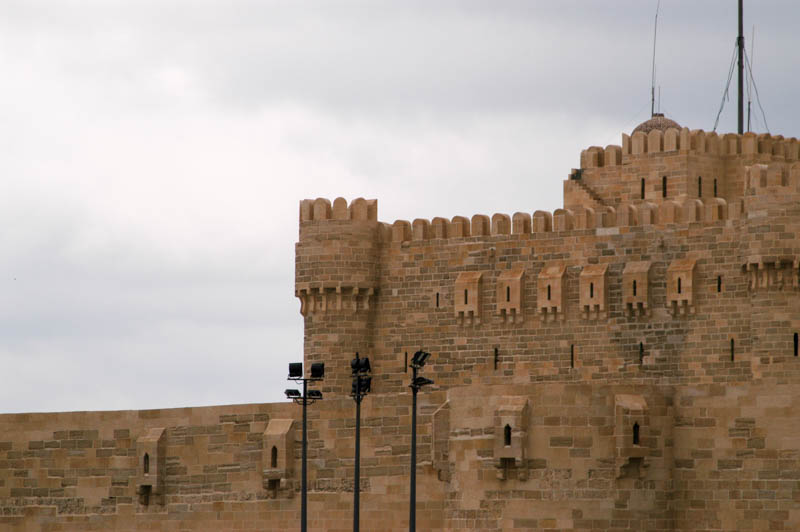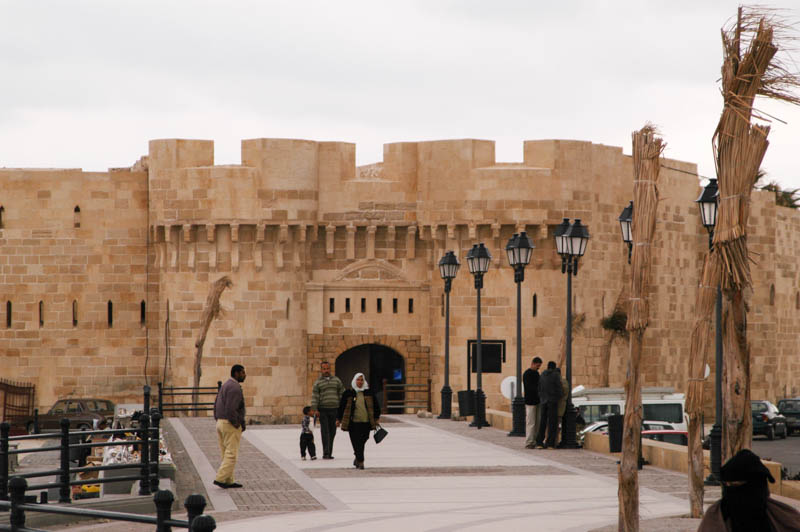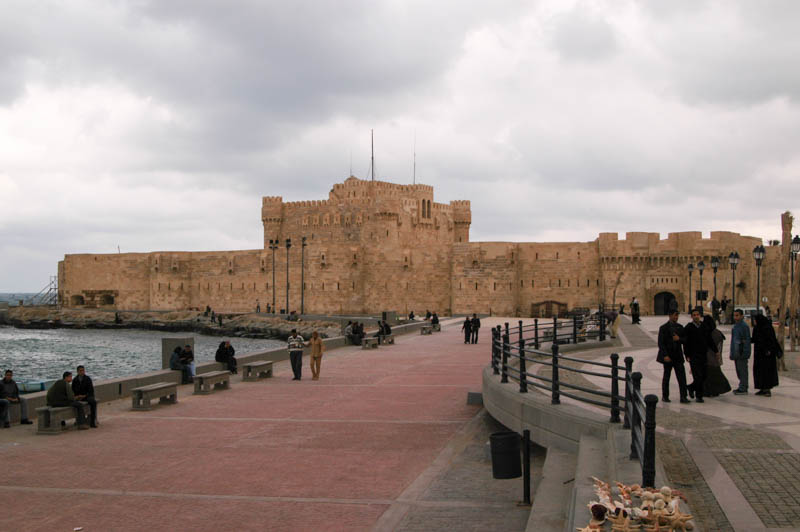On promontory jutting out into the Mediterranean stands the Fort of Sultan Qaitbay. The current fort was built in the 1480s and added to by subsequent rulers, including Mohammad Ali.

Inside the fort — which was closed on the day we visited — are several floors of Napoleonic and British relics and a naval museum. The fort is a huge castle, approached by a long causeway along the beach that ends up between the main towers, the original entrance to the fort. The modern entrance, to the east, is not as noticeable. There are granite and marble columns built into the facade of the walls, from other temples and buildings in Alexandria.

While the fort is interesting, it is the site that is important — Qaitbay sits on the foundations of the Pharos Lighthouse, one of the wonders of the ancient world. This enormous lighthouse — 125 to 150 meters high — was a marvel of architecture when it was built. Alexander the Great is rumored to have designed it, and the lighthouse itself was built during Ptolemy II’s rule.

The first section, which was square, reputedly contained 300 rooms and hydraulic machinery to raise fuel to the second, octagonal story. The third story was round and housed the lantern — the light of which was visible some 56km away. It is possible that there was a lens in the lighthouse; a mirror is mentioned more than once in the documents describing it.